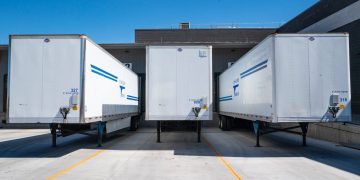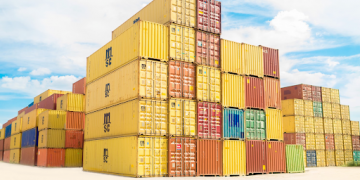With Logistics Management reporting that only around 35% of companies currently have transport management software in place, you may be wondering what function a delivery and transport management system has within the supply chain, and what benefits it could bring to a retailer, distributor or wholesaler.
Delivery and transport management systems (which are often abbreviated to TMS) are an essential part of supply chain logistics.
A class-leading TMS will help companies reduce the costs associated with planning and making deliveries (plus a host of other associated costs) according to Supply Chain Digest, by optimising routes to ensure that each driver and vehicles are able to perform more efficiently and use resources more effectively.

Wikipedia provides a simple one line explanation for commercial applications (such as Stream Go) in companies with both large and small fleets of delivery vehicles incorporate route planning software ‘to optimise route efficiency and boost profits. An ideal route planning solution for distribution companies will often include GPS tracking capability and advanced reporting features which enable dispatchers to prevent unplanned stops, reduce mileage, and plan more fuel efficient routes’.
Using software applications like Stream Go to manage your transportation and deliveries has the potential to provide huge savings in your company – as well as deliver much improved customer satisfaction and customer service. Stream can significantly improve the process of delivering goods from A to B by planning the most efficient routes, while in-flight driver tracking and electronic proof of delivery (ePOD), via the mobile driver app helps to track items and vehicles from the moment they leave the warehouse until final delivery is recorded.

With Stream, delivery routes with single and multiple drops can be optimised in a few clicks to determine the most efficient set of runs / routes which meet all the delivery time requirements in the least total distance. These runs / routes are then assigned to available vehicles (taking into consideration that in some operations vehicles may do more than one run per day) to ensure the most efficient vehicle utilisation.
Information is presented to the planner in such a way as to allow amendments and fine tuning as well as changes to vehicle availability and additional orders being added. This can be an iterative process enabling the planner to continue working on the route (and vehicle) optimisation right up until the vehicle leaves the warehouse / depot / retailer.
Another benefit to using delivery and transport management software, which we touched on earlier, is that it increases customer satisfaction.
Research published in Post & Parcel has shown that over half of online shoppers in the UK expect a delivery window that is accurate to within three-hours or less.
Stream provides two-hour delivery windows when calculating optimised routes.
What’s more, Stream also provides customers with in-flight updates on their deliveries via email or SMS and, as a result, delivery times can be constantly updated on the day of delivery.
Stream integrates with a host of back office software, including Brightpearl, a leading inventory management and retail ERP software application, Veeqo, Sage, Infor LX and BCPS and other Air, Sea and Freight TMS software. This means no time-consuming re-keying of information resulting in minimal order errors, fewer tracking enquiries and reduced customer issues.
Frequently Asked Questions
A delivery and transportation management system (TMS) is a specialised logistics software that provides a variety of functionalities to help businesses plan, execute, and optimize the movement of goods across supply chains.
An effective delivery and transportation management system streamlines your logistics operation, provides real-time supply chain viability and traceability, whilst ultimately reducing costs. This is achieved through improved shipping efficiency and increased levels of customer satisfaction.




